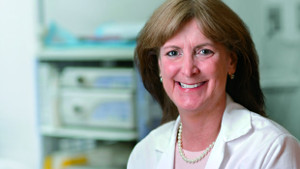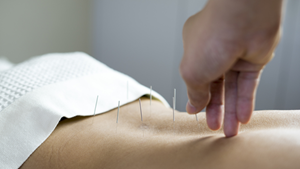Diagnosing high blood pressure: Who knew it could be so complicated?

BP-CHECK study team members Tim Burak, Dr. Beverly Green, Dwayne Joseph, Porothea Dennis, Jerry Campbell, and Patricia Fitz (left to right).
High blood pressure is a well-known health risk. But diagnosing it can be challenging. With patient advisors, the BP-CHECK study aims to find an easier way.
You’d think that diagnosing high blood pressure (also called hypertension) would be old hat by now. After decades of research aimed at preventing heart disease, shouldn’t we already know the best way to diagnose this life-threatening condition that affects nearly one in three Americans?
“The reality is that accurately diagnosing high blood pressure in the clinic is complicated,” explains Beverly Green, MD, MPH, an associate investigator at Kaiser Permanente Washington Health Research Institute (KPWHRI) and a Kaiser Permanente family physician. “A person’s blood pressure naturally goes up and down during the day. And it’s often higher in a doctor’s office than at home.”
So before confirming that a patient has high blood pressure, doctors usually have to ask them to return to the clinic for repeated measurements.
“It’s not a very patient-centered approach,” she says. “And taking extra measurements in clinic still might not provide an accurate picture of a person’s true blood pressure. We need a better way to make the diagnosis.”
New PCORI study paves the way
Enter BP-CHECK, a new KPWHRI study that launched recently thanks to a $2.8 million award from the Patient-Centered Outcomes Research Institute (PCORI). Led by Dr. Green—a nationally recognized leader in hypertension research—the BP-CHECK study has set out to find the easiest, most accurate way to diagnose high blood pressure.
Later this month the study will begin enrolling more than 500 patients from Kaiser Permanente Washington in a randomized trial comparing three different methods of measuring blood pressure:
- in clinic;
- at home using a personal blood pressure monitor; and
- at validated kiosks found in many drugstores.
The study will also compare each method to a 24-hour blood pressure test that the U.S. Preventive Services Task Force (USPSTF) recently named the new “gold standard” for diagnosing hypertension. That test takes repeated measurements while patients are at home, wearing a portable blood pressure monitor and arm cuff that inflates every half-hour during the day and every hour at night.
“The 24-hour test makes sense for getting an accurate diagnosis,” says Dr. Green. “But the required equipment is expensive and hard to come by in most community clinics. The test also poses a significant burden for patients. Widespread implementation could be very challenging.”
Finding what works in the real world
This problem was widely noted in public comments about the USPSTF’s new guidelines. In response, the Task Force recommended personal blood pressure monitors as an alternative at-home testing method—and called for more research on effectiveness and feasibility.
BP-CHECK is answering this call in a variety of ways. In addition to comparing the accuracy of the different methods, the study will identify which one is easiest and most convenient for patients to complete. The study will also assess which method is best suited for implementation—something it’s uniquely positioned to do as a randomized trial embedded in a real-world health system.
BP-CHECK is also the first-ever study to examine the use of drugstore kiosks for diagnosing high blood pressure.
“Not everyone can afford a home blood pressure monitor,” Dr. Green says. “So it’s important to look at methods that people can use for free outside the clinic.”
Keeping patients at the center
This is just one example of how BP-CHECK is bringing patients’ needs and perspectives to center stage. Like many PCORI studies, BP-CHECK has two patient co-investigators and a patient advisory committee. Dr. Green and her team have also talked with dozens of other patients—most of whom either have high blood pressure or are at risk.
“Most patients liked the idea of checking their blood pressure on their own,” she says. “They want to be able to see their results—and use them to work with their providers to control their blood pressure.”
Dr. Green credits her patient advisors for providing other insights that have helped make the study more patient centered. For example, they reminded the study team that not everyone knows what a blood pressure kiosk is—so the team decided to include a photo in its study brochures for patients.
“As patients, we serve as a check and balance for the study,” explains patient co-investigator Dwayne Joseph, a 49-year-old police lieutenant from Tacoma. “It’s important that people in the study understand the instructions for their participation.”
“We also help identify areas of inconvenience for patients,” adds the study’s other patient co-investigator, 80-year-old Jerry Campbell. A former Group Health Cooperative trustee and retired insurance executive with well more than 40 years in the business, Mr. Campbell knows how important it is to find practical ways to improve health care.
“Is the 24-hour test actually the ‘gold standard’? One would think having to wear that cuff for 24 hours would raise your blood pressure,” he says with a chuckle. “I’m very interested to find out if one or more of the other methods is equally valid—or close to it. If there’s an easier way, patients should have that choice.”
In addition to Mr. Campbell and Mr. Joseph, Dr. Green’s collaborators include:
- Karen Margolis, MD, MPH, of HealthPartners Institute;
- Matthew Thompson, DPhil, MBChB, MPH, and Sean Munson, PhD, of the University of Washington;
- Yoshio Hall, MD, of Washington Permanente Medical Group; and
- Andrea Cook, PhD, Clarissa Hsu, PhD, Pedja Klasnja, PhD, and Jennifer McClure, PhD, of KPWHRI.
The research described in this article is funded through a Patient-Centered Outcomes Research Institute (PCORI) Award (CER-1511-32979). The statements presented are solely the responsibility of the author and do not necessarily represent the views of PCORI, its Board of Governors, or Methodology Committee.
by Jessica Ridpath
Related news

How a physician-scientist studying blood pressure became a patient too
Dr. Beverly Green, PCORI-funded BP-CHECK leader, reflects on her professional interest in hypertension getting up close and personal.
KPWHRI News

Fall 2025
- Acupuncture is safe and effective for chronic low back pain in older adults
- Mailed HPV test kits are cost-effective for screening
- Helping first-time screeners know when to return
- Frequent standing may boost heart health after menopause
- Researchers explore link between medical imaging and cancer risk in children





